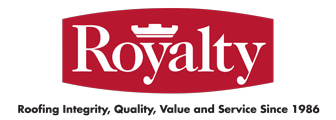How to Evaluate Your Commercial Roof for Damage After a Storm
Some people find storms exciting and interesting while others are apprehensive about them. No matter how you feel about the weather events that bring heavy rain and wind, if you’re a commercial building owner or manager, you still have to deal with their aftermath. Here are four key “damage areas” to consider when assessing your commercial roof after a bad storm.
Wind Damage
It can be common for wind to do a great deal of damage to a roof during a storm. For example, high winds can tear building materials off a roof, open up gaps in membrane seams or expose weak flashings. Take a look at all roofing components to make sure they are intact after each storm.
Debris Damage
Strong winds can not only cause direct damage to your roof surface, they can drop damaging debris onto it and drag it across. Limbs from adjacent trees, sharp metal flashings that have come free, fasteners and other items can poke holes in the membrane during a wind event. Note: if you’re in the market for a new roofing system, invest in one that has passed rigorous puncture testing.
Water Damage
Water penetration is also a potential storm problem. High rooftop winds pushing water into the tiniest of openings can damage the interior of your commercial property. Water stains on ceilings and walls (precursors of mold) are key indicators of water damage that you should address right away before the problem gets any worse.
Hail Damage
Another aspect of severe storms is hail, which can do its own special number on your flat commercial roof. Have your roof looked over as soon as possible after a storm to check for any hail damage. Metal flashing, rooftop equipment (e.g., satellite dishes, HVAC units) and skylights are susceptible. Keep in mind that the hail’s impact may not be immediately visible, but it can damage insulation and other materials under the surface of the membrane.
After a storm, you should plan to inspect your commercial roof as soon as possible. Some issues might be quite obvious to the untrained eye, but because damage can manifest itself below the surface, it’s a good idea to have a commercial roofing professional take a look. They know what to look for, have the right tools, and can do the job safely and efficiently.


